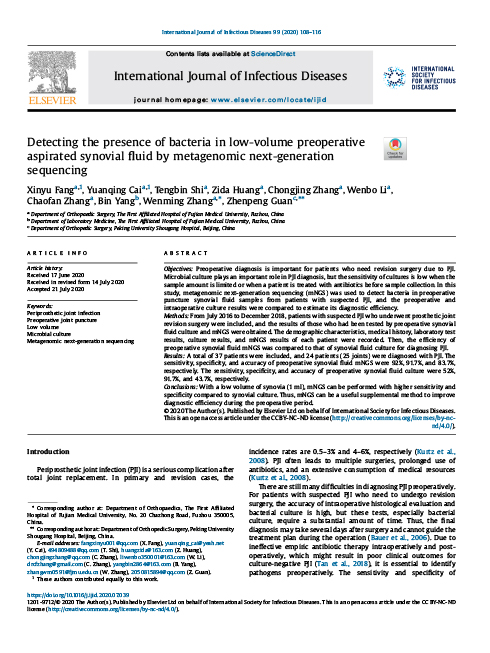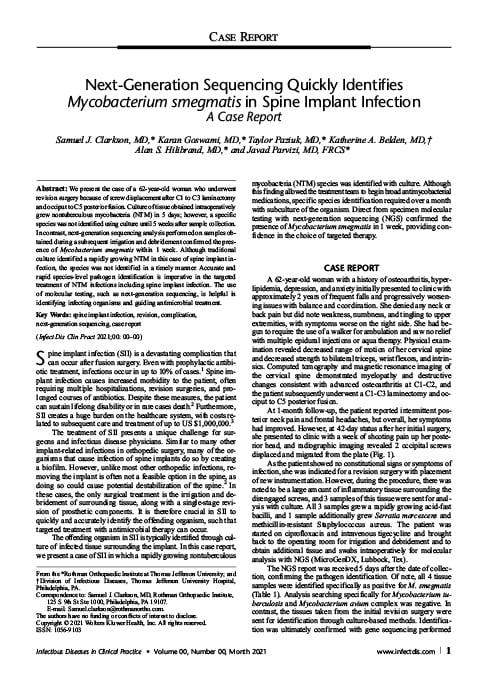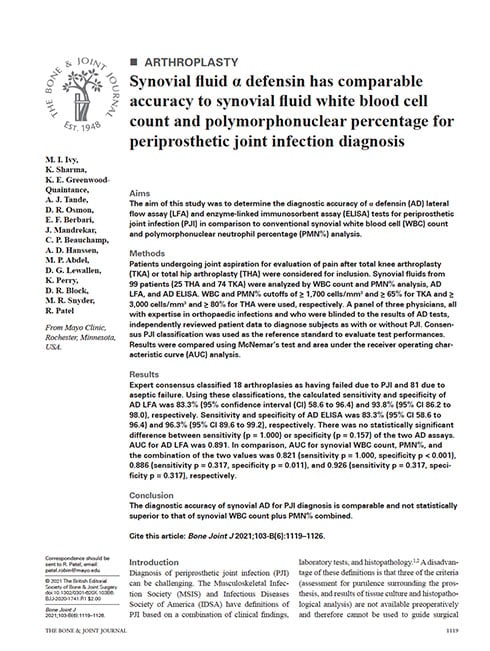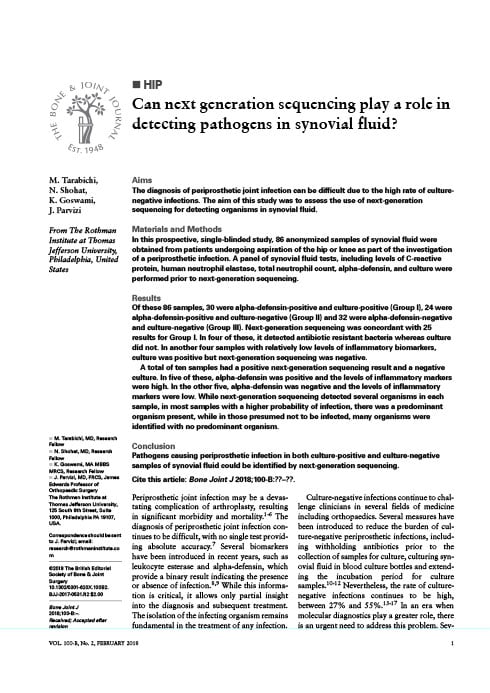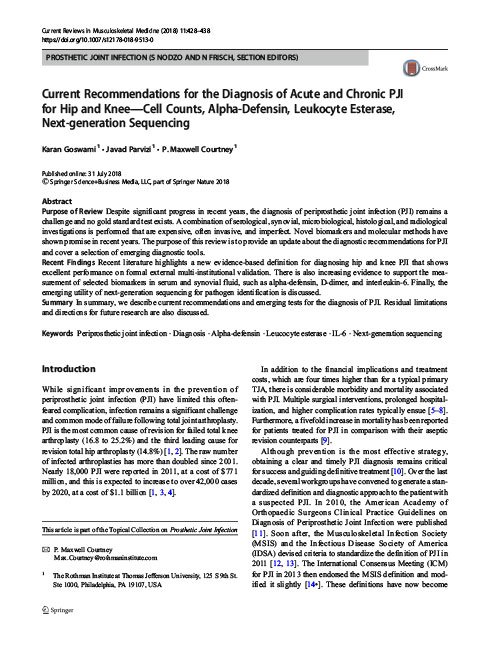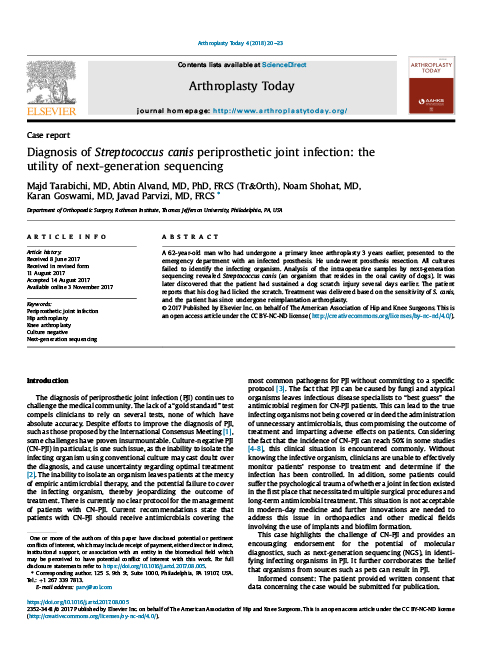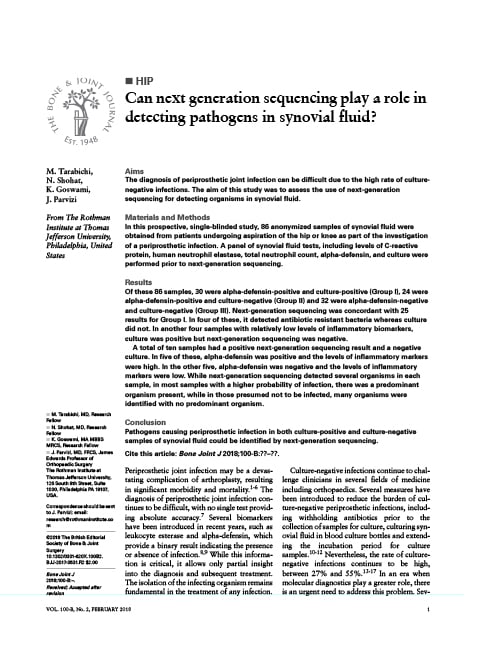- Journal of orthopaedic trauma Research Article: Positive NGS detection was significantly correlated with persistent nonunion, positive in 77% more cases than traditional culture. Nonunion cases were observed to have significantly increased diversity and altered bacterial profiles from control cases. Read Article…
- International journal of infectious diseases Research Article: With a low volume of synovia (1 ml), mNGS can be performed with higher sensitivity and specificity compared to synovial culture. Thus, mNGS can be a useful supplemental method to improve diagnostic efficiency during the preoperative period. Read Article…
- Allergy & Rhinology Case Report: We present the case of a 62-year-old woman who underwent revision surgery because of screw displacement after C1 to C3 laminectomy and occiput to C5 posterior fusion. Culture of tissue obtained intraoperatively grew nontuberculous mycobacteria (NTM) in 5 days; however, a specific species was not identified using culture until 5 weeks after sample collection. Read Report…
- The Bone & Joint Journal Vol. 103-B, No. 6 Article:The aim of this study was to determine the diagnostic accuracy of α defensin (AD) lateral flow assay (LFA) and enzyme-linked immunosorbent assay (ELISA) tests for periprosthetic joint infection (PJI) in comparison to conventional synovial white blood cell (WBC) count and polymorphonuclear neutrophil percentage (PMN%) analysis. Read Article…
- The Bone & Joint Journal 2018 Feb;100-B(2):127-133 Prospective Study:The diagnosis of periprosthetic joint infection can be difficult due to the high rate of culturenegative infections. The aim of this study was to assess the use of next-generation sequencing for detecting organisms in synovial fluid. In this prospective, single-blinded study, 86 anonymized samples of synovial fluid were obtained from patients undergoing aspiration of the hip or knee as part of the investigation of a periprosthetic infection. A panel of synovial fluid tests, including levels of C-reactive protein, human neutrophil elastase, total neutrophil count, alpha-defensin, and culture were performed prior to next-generation […]
- Current Reviews in Musculoskeletal Medicine Vol. 11, pages428–438(2018) Study: Despite significant progress in recent years, the diagnosis of periprosthetic joint infection (PJI) remains a challenge and no gold standard test exists. A combination of serological, synovial, microbiological, histological, and radiological investigations is performed that are expensive, often invasive, and imperfect. Novel biomarkers and molecular methods have shown promise in recent years. The purpose of this review is to provide an update about the diagnostic recommendations for PJI and cover a selection of emerging diagnostic tools Read Study…
- Arthroplast Today. 2017;4(1):20-23. Case Report: A 62 year old man presented with an infected prothesis from a primary knee arthroplasty three years prior. Next-generation sequencing identified the infective organism as Streptococcus canis, which cultures failed to detect. The patient was successfully treated and later underwent reimplantation arthroplasty. Read Report…
- Bone Joint J. 2018;100-B(2):127-133. Study: In a prospective, single-blinded study, periprosthetic joint infection was assessed in 86 synovial fluid samples from patients undergoing aspiration of the hip or knee. Next-generation sequencing (NGS) identified periprosthetic microbial pathogens in both culture-positive and culture-negative samples of synovial fluid. Unlike culture results, NGS detected antibiotic resistant pathogens in four cases; in 10 culture-negative samples, NGS identified positive results. Read Study…

